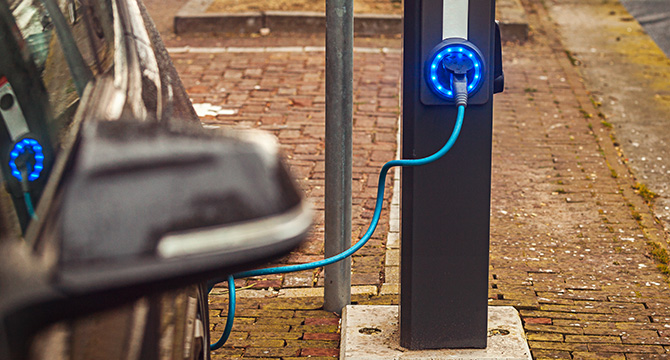
In 2017, for the first time ever, Norway registered more electric and hybrid vehicles than traditional vehicles with internal combustion engines. Even in the United States, as of May Tesla’s Model 3 became the best selling vehicle in its segment, regardless of powertrain, beating out traditional stalwarts from the traditional German luxury marques. However, with all of the incentives surrounding EVs, it is important to take stock in the externalities driving consumers toward larger-scale EV adoption. The following is a list of some perks (“carrots”) and punishments (“sticks”) being implemented to encourage this shift.
Carrot: Tax Incentives
The current U.S. tax incentives, which survived the Tax Cuts and Jobs Act of 2017, have been much discussed, including in this blog. As a non-refundable tax credit, the U.S. incentives are targeted toward higher income earners who owe at least $7500 in federal taxes. Analysts expect these incentives to start phasing out by the end of the year for Tesla and GM and it will be notable to keep an eye on whether the phase out affects domestic EV sales for either company.
Norway takes a slightly different approach, with vehicles generally being subjected to a 25% VAT. Electric vehicles are exempted from this high sales tax, making them comparatively much less expensive to purchase. In some respects, the 25% VAT on conventional automobiles acts as a stick to discourage their purchase, but since the tax was adopted long before the EV exemption was introduced, the exemption should be seen as one of the most effective incentives driving EV ownership of any country. Also, unlike the U. S. tax approach, which centers around the federal income tax, the Norwegian approach does not discriminate based on income, apart from the baseline ability to purchase a new car.
Carrot: Freebies and Exclusive Access
In many cities, EV owners receive access to toll roads (and ferries in Norway) for free. Likewise, in London, EVs qualify for a 100% discount on the congestion charge. Lately, these perks have been on the decline (Norway is gradually phasing out its exemptions and Los Angeles is charging EV drivers, albeit at a discounted rate).
Governments have also introduced quality of life improvements to encourage EV adoption. Places like California, known for major congestion issues, allow single drivers with Clean Air Vehicle decals to access HOV lanes. Similarly, governments and businesses are starting to provide premium parking spots, often for free, exclusively for EVs.
Stick: Fleet Emissions Requirements
The United States sets out a Corporate Average Fuel Economy, or CAFE standard. This structure gives automakers the opportunity to balance inefficient large vehicles with smaller, ultra-efficient cars (often “compliance” cars) to achieve the desired end result of reducing overall fuel consumption and corresponding pollution. While the CAFE policies are structured in a way to benefit society and even enable potential cap-and-trade systems, historically the CAFE requirements have been weak. Fuel economy standards were mostly stagnant from 1985-2010, although they finally received a gradual upward push in 2007. Even then, for decades the CAFE penalties were unchanged as $5. 50 for every 0.1 mpg below the standard until 2016, when NHTSA raised the penalty to $14. Spread over an entire fleet of non-compliant vehicles, and these penalties can add up to tens of millions of dollars for a manufacturer. However, when compared to the profits made on non-compliant cars, automakers may still find it worthwhile paying the penalties rather than investing in other powertrains or shifting their product mixes. In all, the CAFE standards would likely have much stronger efficacy if they were simply required to be met in order to sell any vehicles, rather than even giving automakers the option to pay the penalty.
Stick: Other Regulatory Penalties
In the wake of the diesel emissions scandal, CARB, the EPA, and VW agreed to a creative settlement, which aims to accelerate EV adoption. Rather than merely collecting a fine, VW must commit $2 billion to developing an electric vehicle charging infrastructure through a new entity, Electrify America. Rather than leaving it at an ephemeral promise to invest, the settlement even spells out an investment timeline with four $500 million installments every 30 months as well as CARB and EPA oversight. That’s not to say that there aren’t still fines being levied; California is collecting and reinvesting $423 million in subsidies for electric buses, trucks, and other vehicles.
What if the carrots and sticks both work?
For the time being, an ideal EV policy likely requires a mixture of both carrots and sticks. In the long run, if EVs truly become widespread and supplant the internal combustion engine, the carrots will have to disappear, as they are already wont to do, or risk disrupting vital infrastructure revenue streams. If both supply and demand sit squarely on the EV side of the industry, there is no more need for carrots to shift the market. However, even in this distant fully-electrified future, capitalism prevails and companies will try to cut costs and skirt regulations. For this truism, we can be certain that there will always be sticks.